Lighting a dining room – expert tips to give mealtimes a glow-up
Set the mood, from sociable to intimate, with these professional tips on lighting a dining room
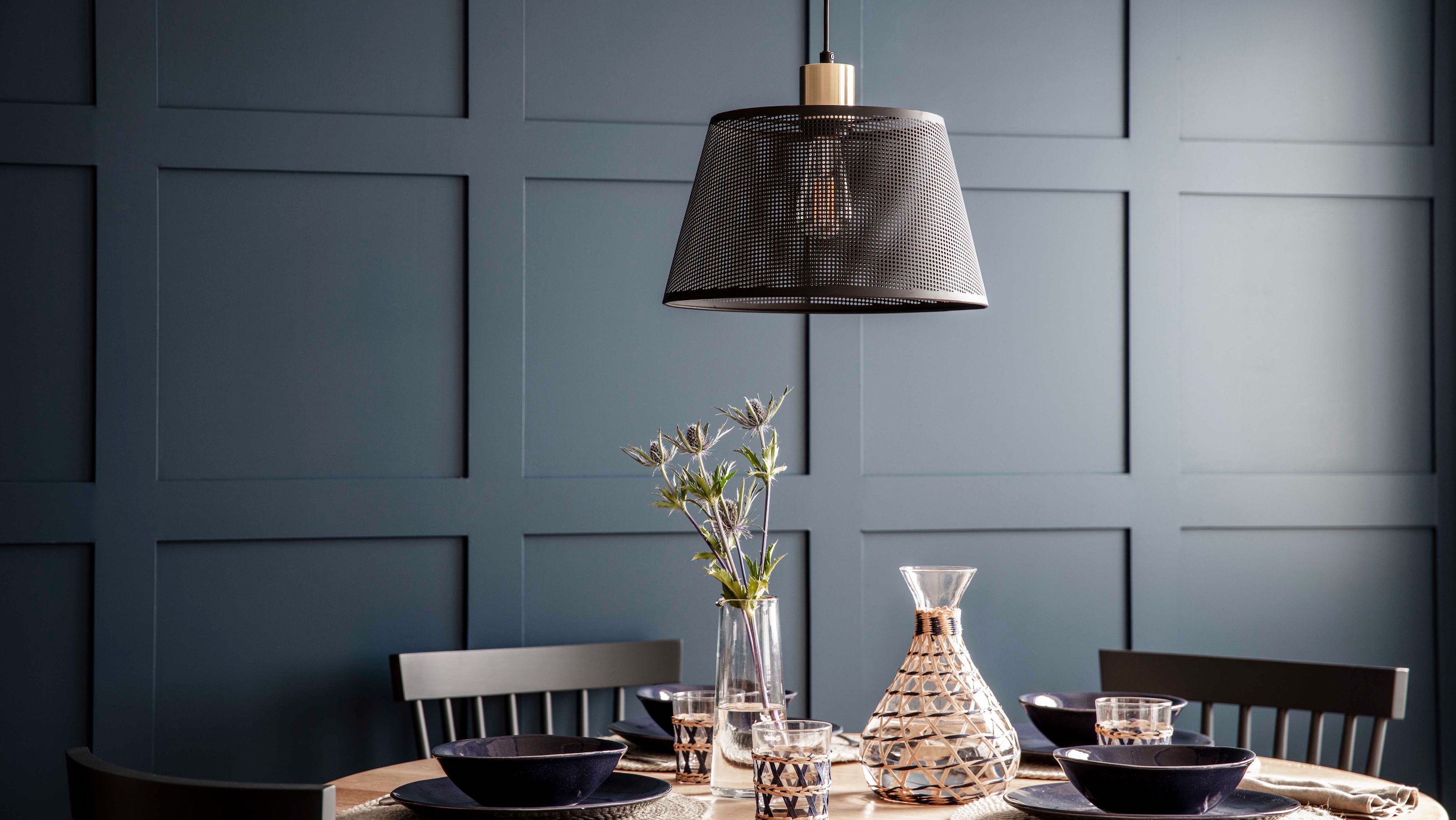

We tend to think of lighting a dining room as the final touch to a decorating scheme, coming after the paint and paper have been chosen, the carpet fitted, and the furniture put in place. But in any room, getting the lighting right can transform a scheme from so-so to stunning at the flick of a switch.
When you're putting together your dining room ideas, put a focus on your dining room lighting ideas from the start. Partly that's practical – experts agree that having two circuits for your lights is key to creating the best look and atmosphere, so you may need extra wiring installed. But it's also so that you can create a layered lighting scheme with different types of illumination that's an integral part of your dining room decor.
Lighting a dining room
Beautiful dining room lighting is about more than a pendant lamp hanging above the table and a dimmer switch on the wall. Well-planned lighting include ambient, task and accent lighting for the best effect.
'We recommend incorporating a mix of floor and table lamps, as well as accent wall and pendant lighting,' explains Rohan Blacker, Founder of Pooky. 'It’s the perfect way to introduce a layered lighting scheme into the space, while highlighting particular areas of the room.
'Incorporating more varied sources of light around the room can ensure the mood always fits the occasion. Wall lamps scattered around a dining room will create a dimmed, ambient and intimate atmosphere, while still allowing space for a staple chandelier that will light up the room in time for bigger gatherings.'
1. Add layers of ambient light
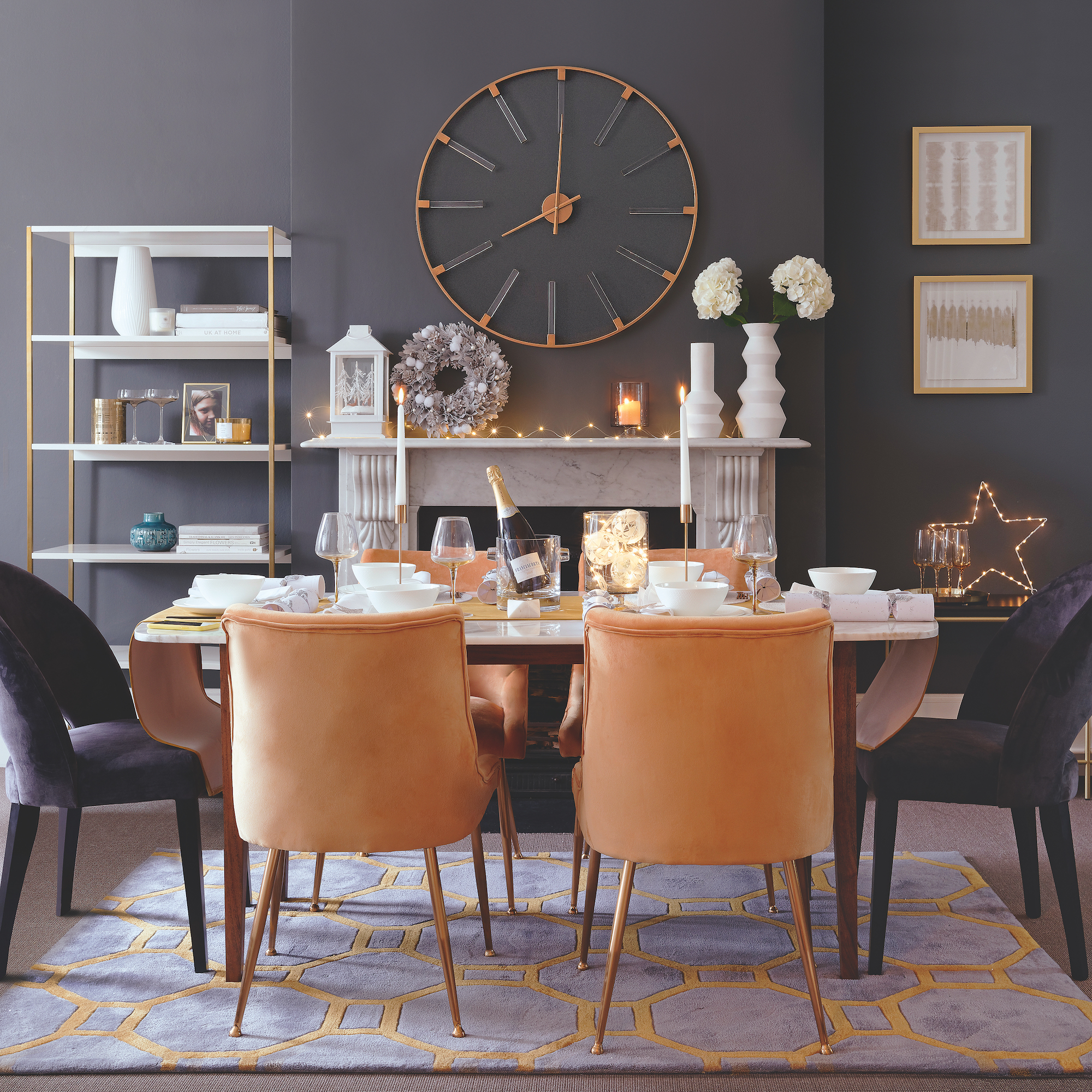
Ambient lighting is the foundation of a lighting scheme, bringing warmth and atmosphere to a space – essential elements in a dining room, where you might switch from the kids' suppertime to an evening entertaining friends. And it's just as crucial if you're looking at small dining room ideas, as it is in a bigger space.
'Using only one overhead light in your dining room can cast stark shadows across the room and can sometimes be too bright for more casual or intimate dinners,' explains Matthew Currington, Technical Director of The Lighting Superstore.
'Ideally, you want to create a warm glow that fills the room. This can be created using a combination of overhead lighting, wall lighting and floor lamps. Table lamps are also a great option if used on a sideboard.
'These lighting options don’t necessarily need to be used at the same time, but rather give you options to light the room depending on your needs.'
2. Make a statement with a pendant
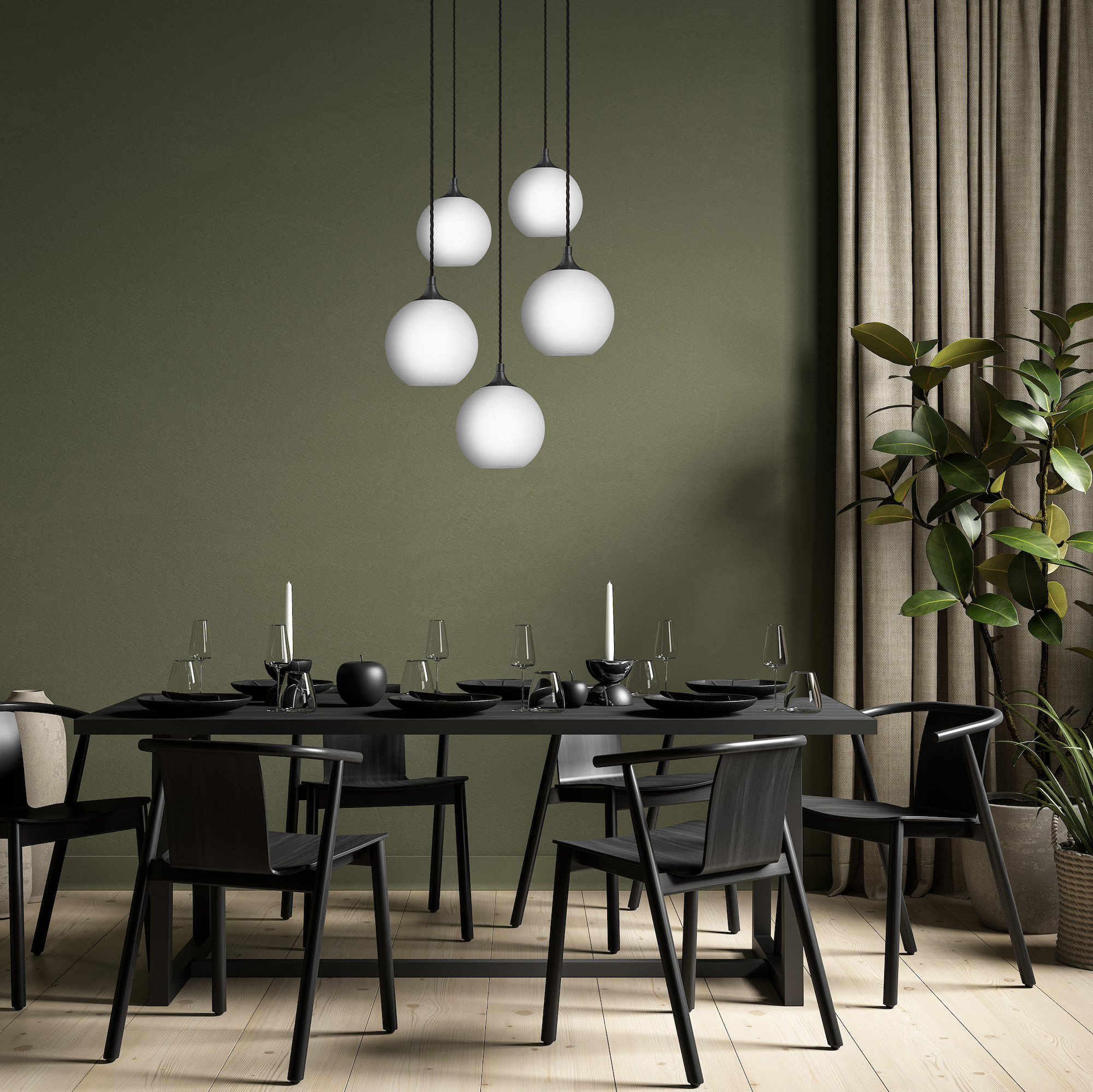
Having a statement light above the table is a must-have in your dining room scheme, making it the focal point of the room and naturally drawing people to gather to share a meal together.
'A popular upgrade to standard ceiling pendant lights is clustered chandeliers that feature multiple hanging pendants,' suggests Marketa Rypacek, Managing Director of lighting brand Industville.
'There are two effective ways of doing this. Firstly, you could hang the pendants at varying heights and choose shades of different sizes and styles to create a totally unique fixture.
'Alternatively, for a more uniform look, pick shades of the same style, hung in a neat row at the same height. Both options create an eye-catching feature and can be paired with coordinating wall lights – an element of your dining room wall decor ideas – to complete the chosen look.'
3. Match your pendant to your table shape

Interior designers spend a lot of time thinking about the relationship between different elements in a room scheme. In a dining room, it is on choosing a pendant light that looks good with the dining room table below.
'For those with round or square dining tables, a centrally positioned pendant or pared-back directional chandelier would work really well, as do a cluster of pendants hanging at different heights. These would work as a statement-making feature, while providing optimal lighting for dinner time,' explains Rohan Blacker, Pooky founder.
'Longer, rectangular tables require light that spreads across the length of the table. We recommend opting for either a linear chandelier with multiple light sources or a trio of pendants styled side by side which will have the same effect.
'For a playful touch, use different colours, finishes, or even different pendants in complementing shapes and styles. This will draw the eye and add a dash of quirky personality to your dining room colour scheme.'
4. Introduce task lighting
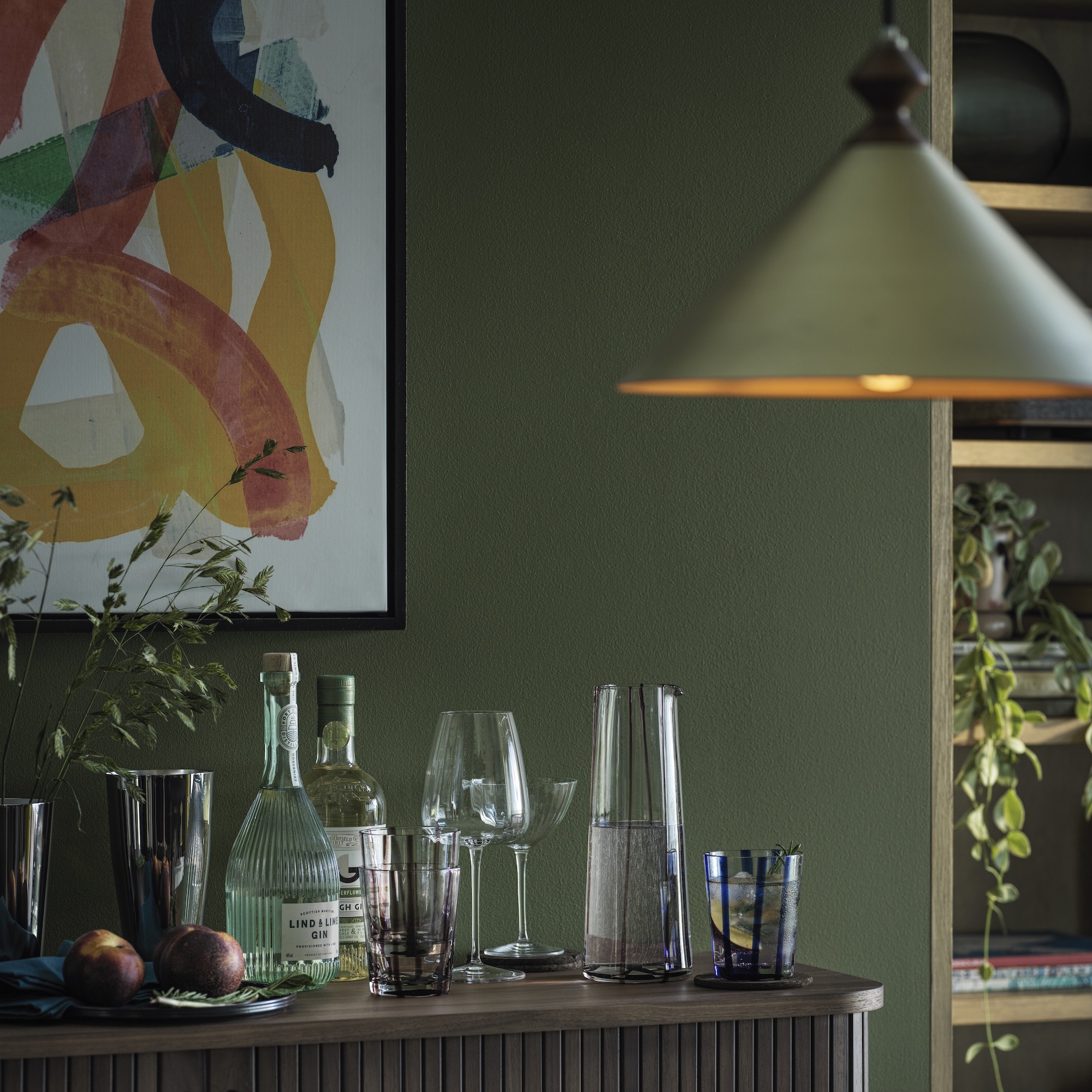
The main function of a dining room, of course, is eating, so any task lighting has to make that easier! 'Task lighting by definition needs to be well placed and effective enough to illuminate the task at hand. Direct lighting above the table is the obvious way to go and works particularly well when using multiple sources to create an even lighting level along the length of the space,' explains Patricia Gibbons from the Design Team at sofa.com.
But in today's multifunctional homes, mealtimes aren't the only times that a dining area is useful.
‘The dining room can often function as a work-from-home and homework space,' says Peter Legg, Lead Designer at Där Lighting. 'Pendants spanning the table can act as task lighting for these moments, and by fitting them to a dimmer, you can easily change the atmosphere when needed.
'Wall lights can also act as task lighting when placed over sideboards or bar carts. They will provide illumination for pouring tipples or tablescaping prep without encroaching on the atmosphere.’
5. Sync your lights with your decor
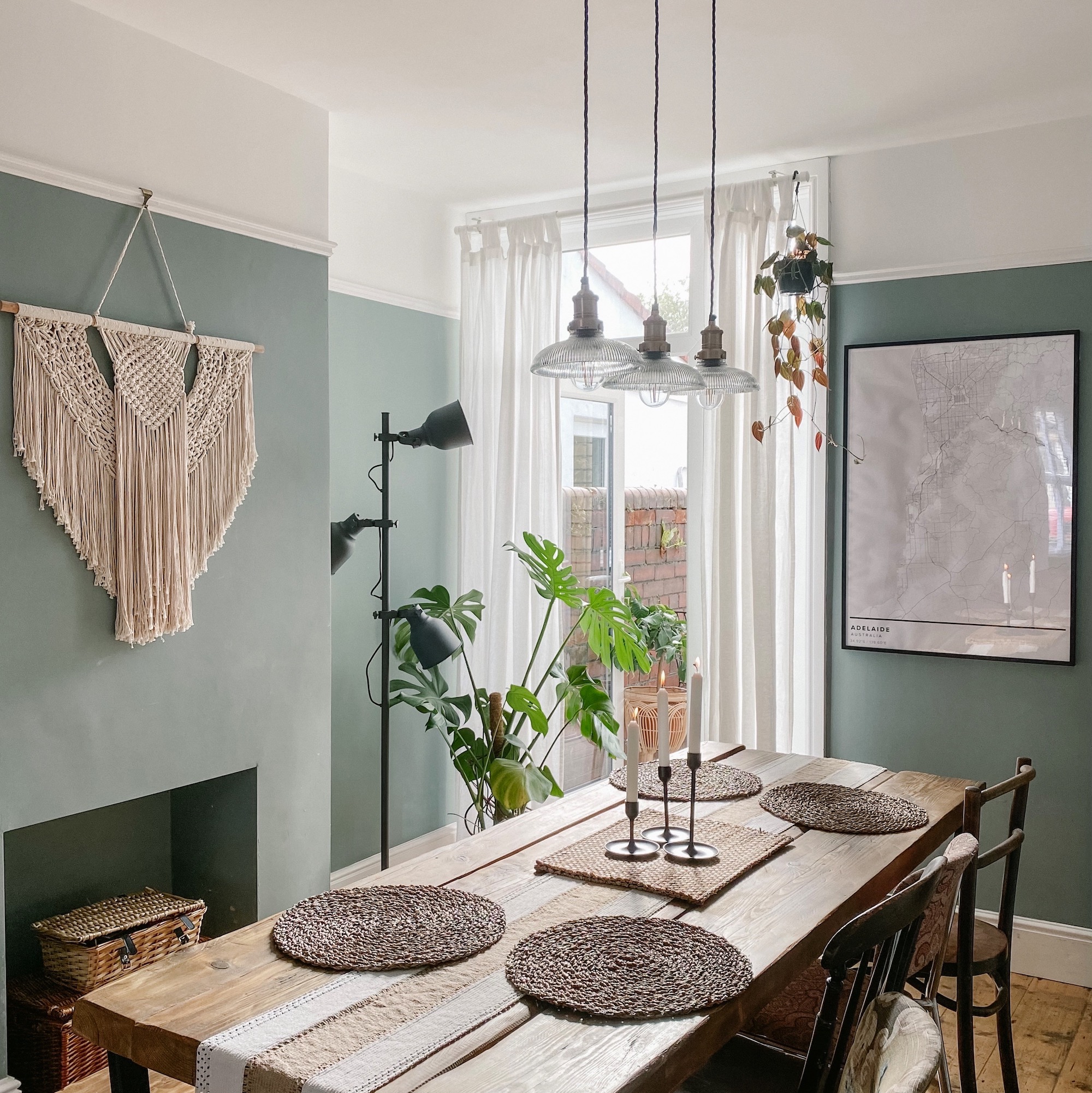
When you're considering how to light a dining room, remember that whether you go for elegant glass, warm metallics or a bold and bright shade, your lights will help define your decor style.
'The ambient lighting in a dining room will usually come from pendants, wall lights or spotlights, depending on the desired style. While spotlights give a clean, minimalist look, there is a huge choice of wall and pendant lights in a variety of styles and sizes which can add to the overall décor in the room,' says Marketa Rypacek from Industville.
'Choosing metallic shades will add a touch of glamour and shine for example, whereas glass designs are perfect for a traditional, elegant look. Shades with gold or brass on the inside are also great as they soften the light giving a beautiful warm glow. In larger spaces with high ceilings, opt for small cluster lights or multiple hanging pendants over a dining table to make a real design statement.'
6. Choose the size of your pendant carefully
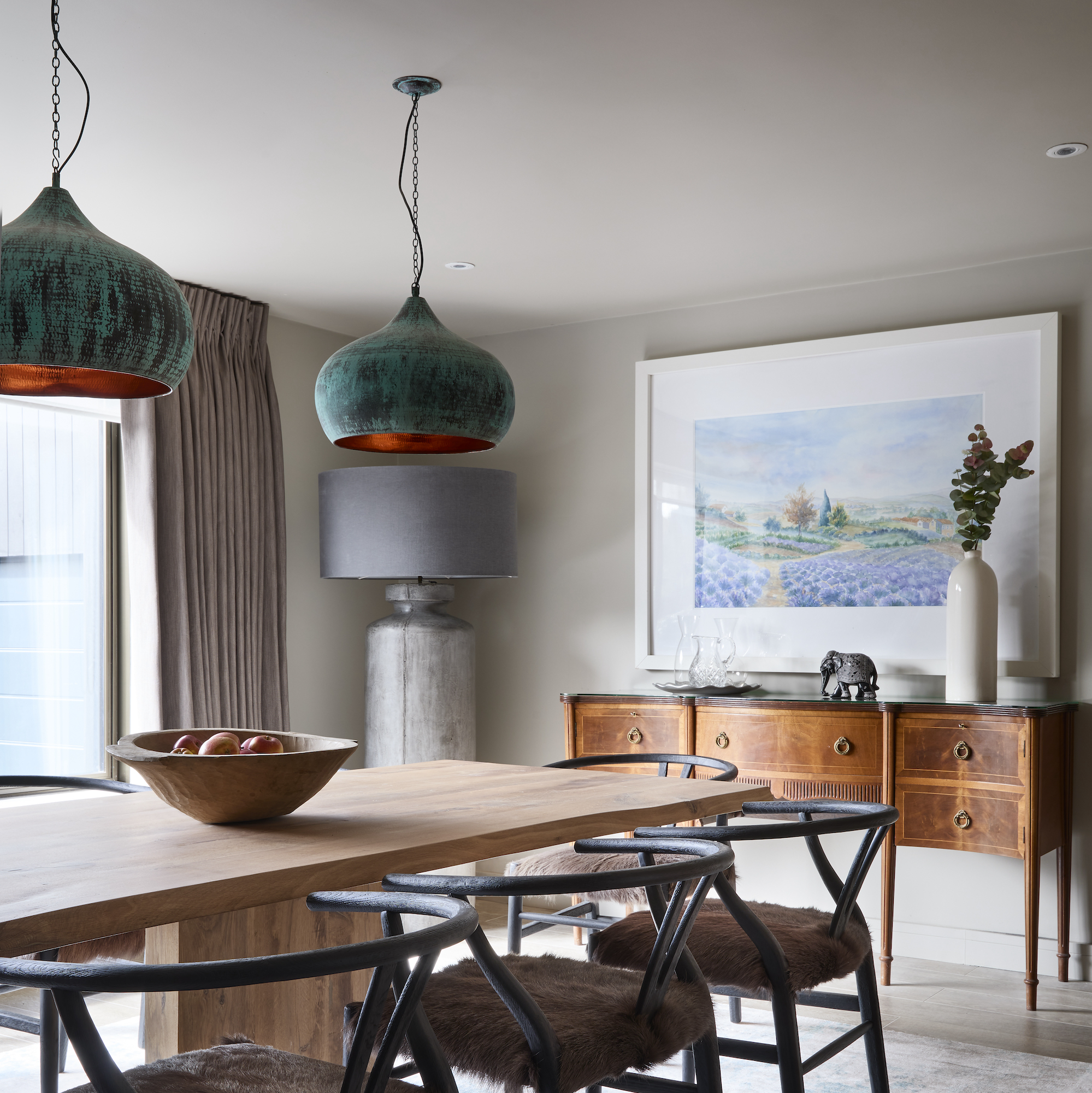
It's important to get the size and scale of your fixtures just right – a light that extends beyond the length of your table, or hangs too low above your head, can overwhelm your space.
'To keep the effect from being overpowering, choose a fitting that is no more than one-half to two-thirds the width of your table,’ advises Peter Legg at Där Lighting.
'For a long, large table, opt for something lengthier and more dramatic. A long table is ideal for using several individual pendant lights along the centre of the table. Ensure the pendant lights stay within the area of the dining table to keep the space feeling balanced,' advises Matthew Currington, Technical Director of The Lighting Superstore. 'For a small or round table, opt for a single pendant light, so as not to overwhelm the space. One centrally positioned chandelier or fun shade is perfect for smaller tables.
'If you would prefer to use a multi-light pendant, opt for a cluster pendant with adjustable heights, so you can personalise the design and ensure there is enough space between the table and light.'
7. Light an open-plan dining room
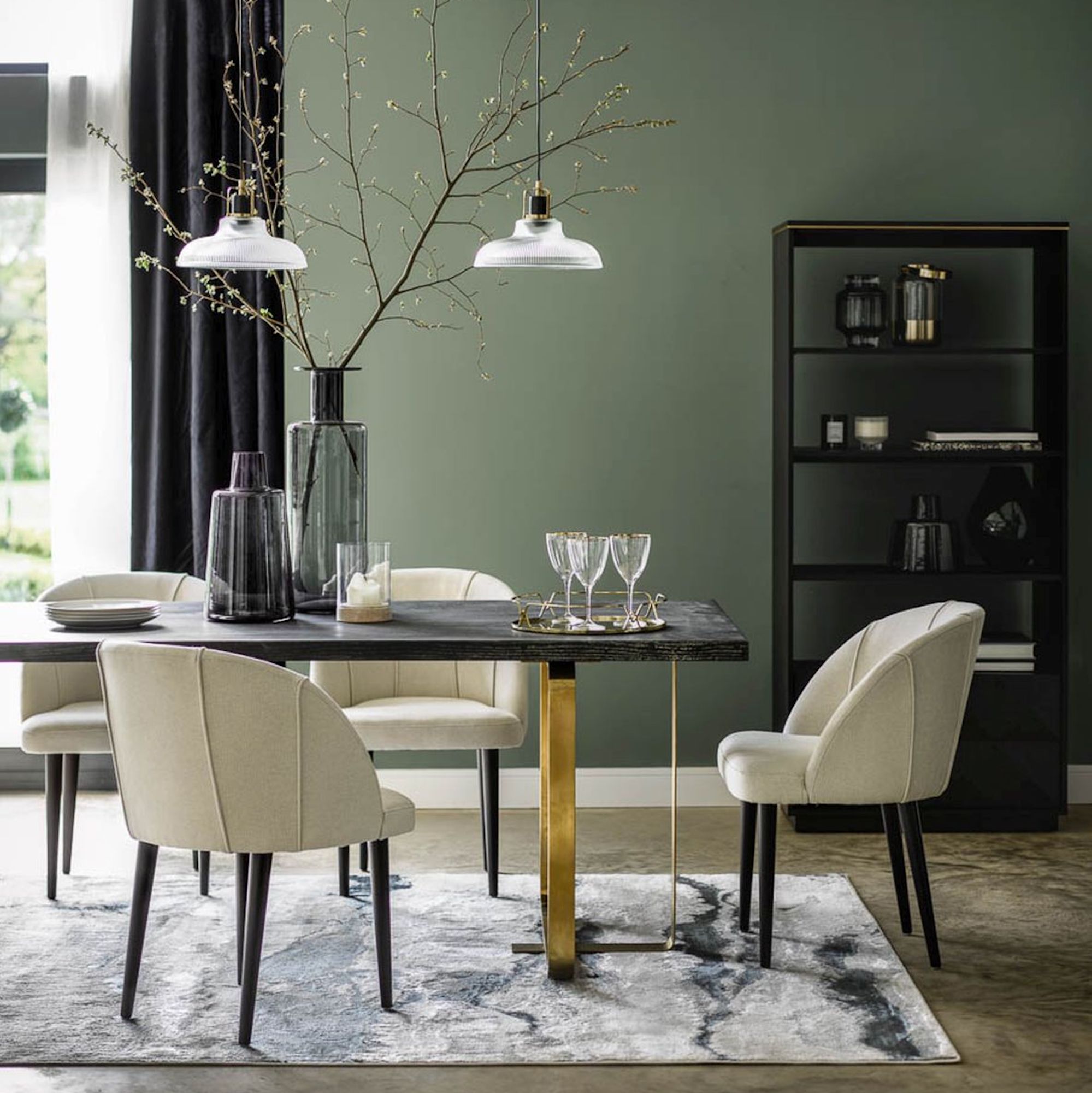
When your dining room is part of an open-plan layout, zoning your lighting can help to define the eating area and give it a sense of identity. You could switch on the pendant during mealtimes, then flick on the wall lights later to help integrate the dining room in the space.
Peter Legg at Där lighting explains: 'layer your lighting circuit so that your main and accent lights can be adjusted separately. This is particularly useful for dining rooms in open-plan spaces as you can connect the room to the rest of the scheme even when it’s not in use through a warm glow from your wall or feature fittings, such as picture lights.’
8. Opt for battery lamps instead of candles
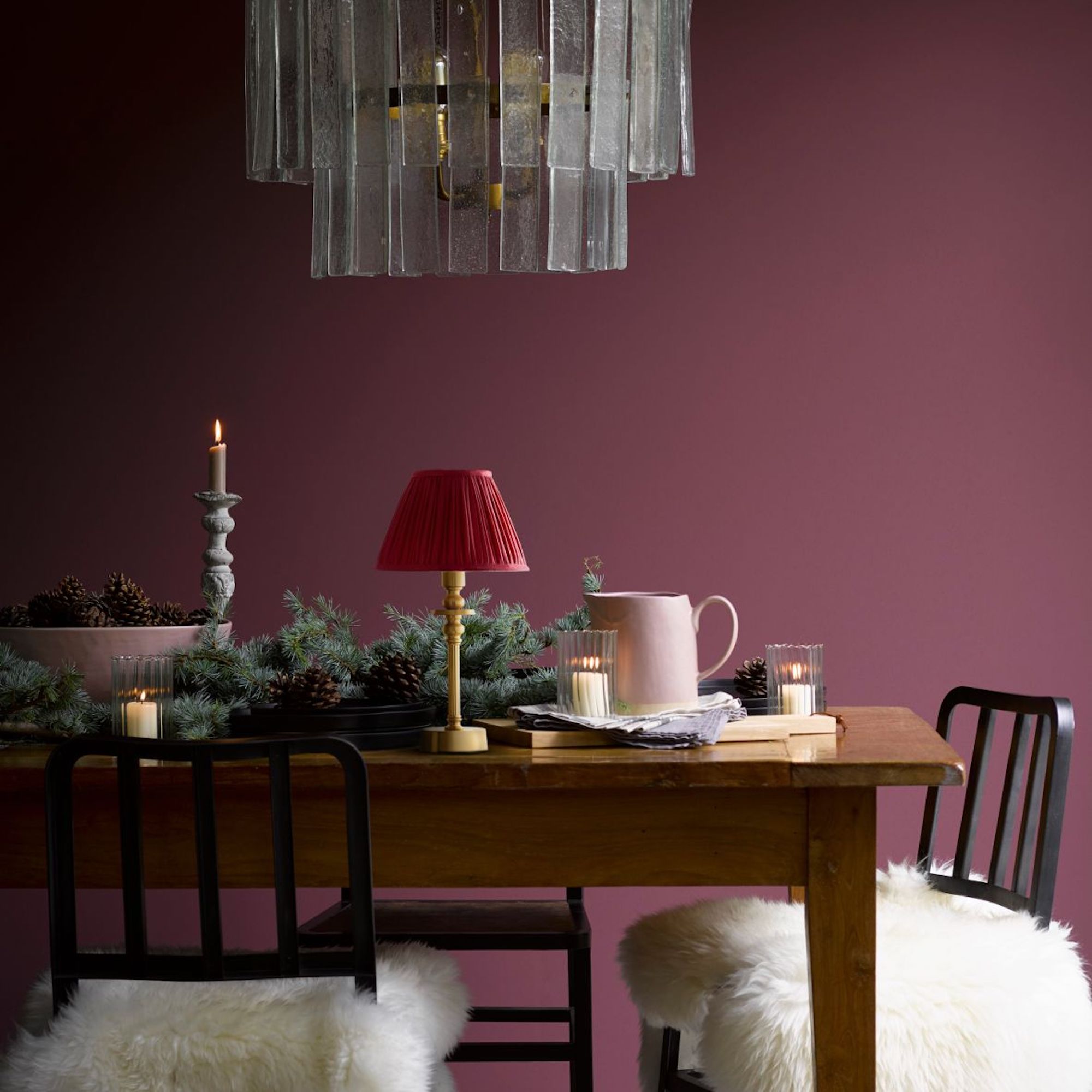
Most experts advise against using lamps when laying a table, as the wires can be a trip hazard and also interfere with your tablescaping. But there is another way…
'If your dining room has become a makeshift home office, the addition of a well-placed cordless lamp can introduce that extra pool of light needed while not being restricted by tangling cords or needing placement near plug sockets,' suggests Rohan Blacker, Founder of Pooky.
'Even for social evenings with friends and family, coupling cordless lamps along the table length provides the necessary light, and yet mimics the softer glow of candles.'
9. Ask your electrician to fit different circuits for your lights
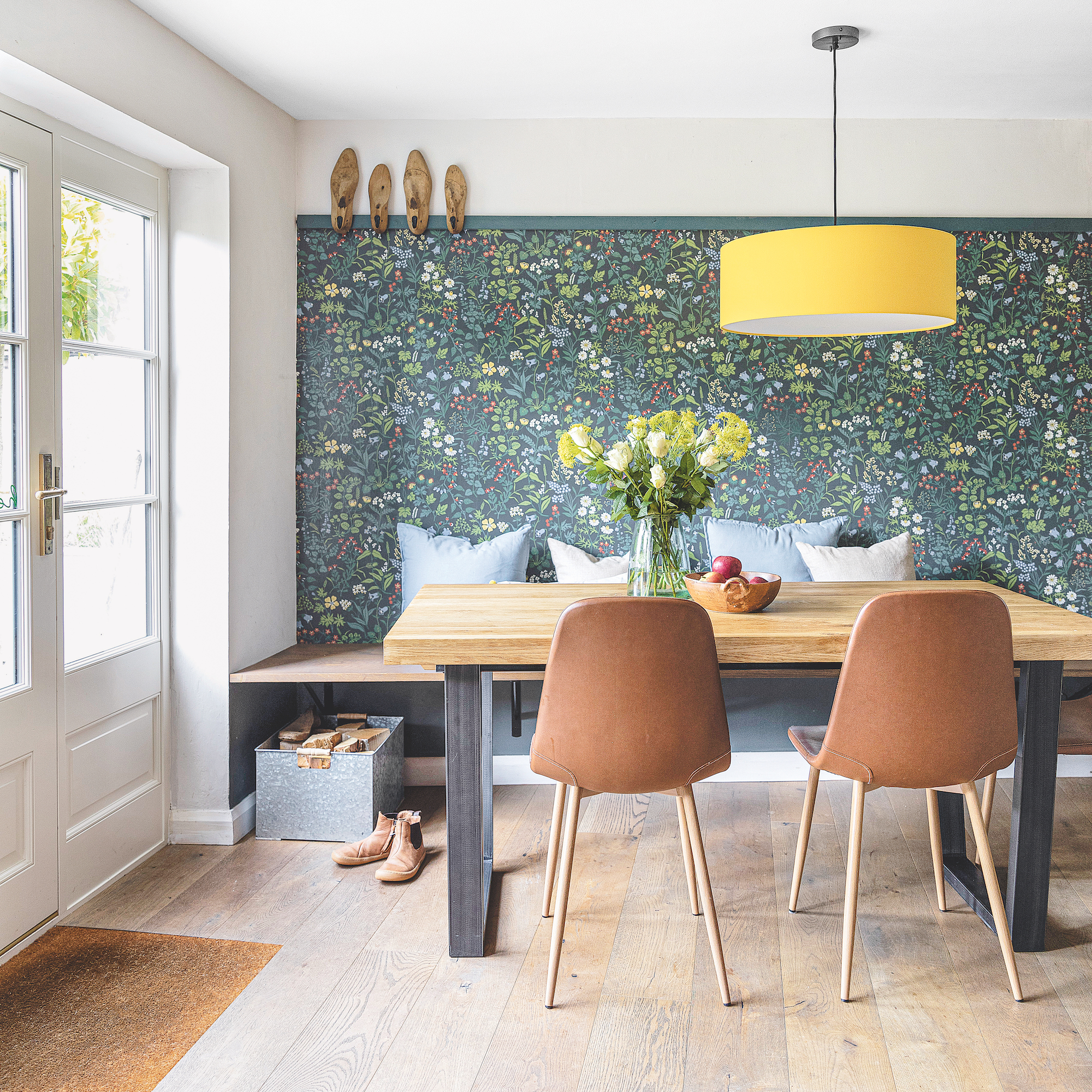
If you're decorating your dining room, take the opportunity to fix the electrics to give you the best lighting options for your space.
'Task and ambient lighting should be controlled on different circuits as this will give you maximum control,' explains Matthew Currington, Technical Director of The Lighting Superstore. 'If using a combination of downlights and a statement light like a chandelier or pendant, having these on different circuits will also allow you to adjust the atmosphere of the space, depending on what it’s being used for.'
Cue daytime brightness and a moody glow for romantic suppers.
10. Don't forget dimmer switches
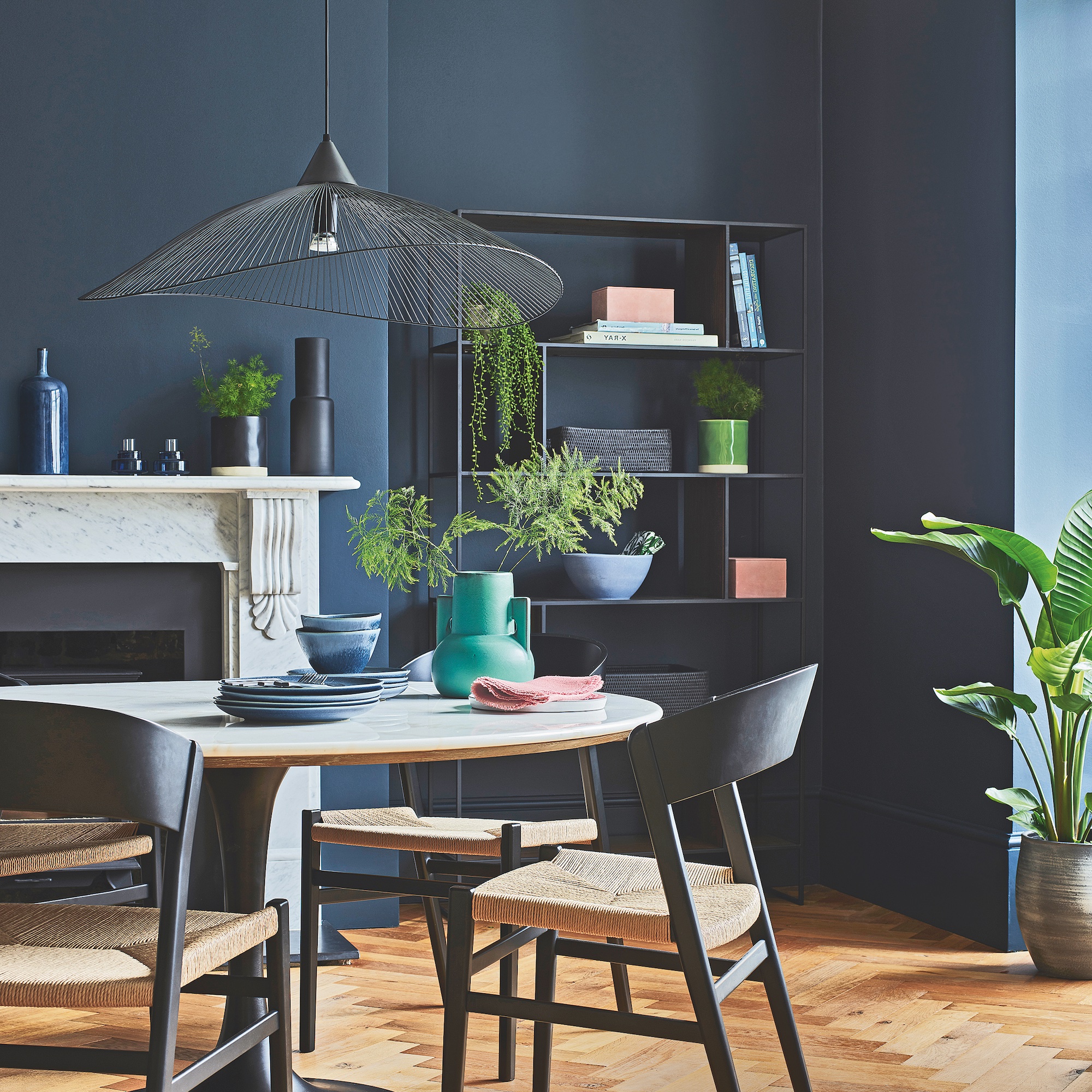
Low-level lighting sets the perfect mood for entertaining and intimate dinners, but relying on candles alone can make the room too dark.
'Candles often form part of the lighting scheme when it comes to dinner parties,' agrees Där Lighting's Peter Legg. 'But having a dimmer installed for the main lights will enable you to create a balanced look across the room. It also means that you can change the illumination as needed. During family meals with younger children, you will want a brighter shine, and dimmers allow you to do it all at the touch of a switch.’
What type of light should go in a dining room?
You'll want a range of lights in a dining room in order to create a layered scheme that suits different times of day, and the ways in which you use the space. The main light will probably be a pendant to illuminate the table.
Uplighters on the wall or a corner lamp will provide an additional ambient glow. Or you could choose downlighters to shine down on a buffet or sideboard at the side of the room. And don't forget candles or battery-operated lamps on the table for the atmosphere.
What colour light is best for a dining room?
Opt for warm-toned bulbs or LEDs to create a cosy atmosphere – just think of how the lighting in your favourite restaurant invite you to linger, while the bright lights of a takeaway or supermarket encourage you to move fast through the space.
'Warm and inviting light is paramount for a dining room,' agrees Peter Legg at Där Lighting. 'The best ambient lights will draw focus to the main social area – the table. Oversized pendants or those made from reflective materials such as crystal will add some grandeur.’
What's the ideal height for a light over a dining room table?
No one wants a light hung so low that you can't see the person sitting across from you at the table, or one so high that it might as well be a ceiling light.
As a general rule, lighting experts advise a distance of around 75cm-90cm between the top of your dining table and the base of a pendant light – although the exact distance will depend on the scale of your room. If you have a 2.5m ceiling, your pendant light should hang around 70cm above the table; for every foot higher, add an extra 7cm-15cm of flex.
'Practically speaking, pendants work well for two reasons – they are most often hung at a higher level than eyesight, and are therefore visually out of the way allowing guests to converse with sight unrestricted across the dinner table,' says Patricia Gibbons, from the Design Team at sofa.com.
Get the Ideal Home Newsletter
Sign up to our newsletter for style and decor inspiration, house makeovers, project advice and more.

Andrea began her journalism career at Ideal Home and is currently Editor of our sister title, Country Homes & Interiors, which celebrates modern country style. Andrea is passionate about colour and how it can transform both our homes and our sense of wellbeing, and has completed The Power of Colour course with the prestigious KLC School of Design. Andrea's career spans interiors magazines, women's lifestyle titles and newspapers. After her first job at Ideal Home, she moved on to women's magazines, Options and Frank. From there it was on to the launch of Red magazine, where she stayed for 10 years and became Assistant Editor. She then shifted into freelancing, and spent 14 years writing for everyone from The Telegraph to The Sunday Times, Livingetc, Stylist and Woman & Home. She was then offered the job as Editor of Country Homes & Interiors, and now combines that role with writing for idealhome.co.uk.
-
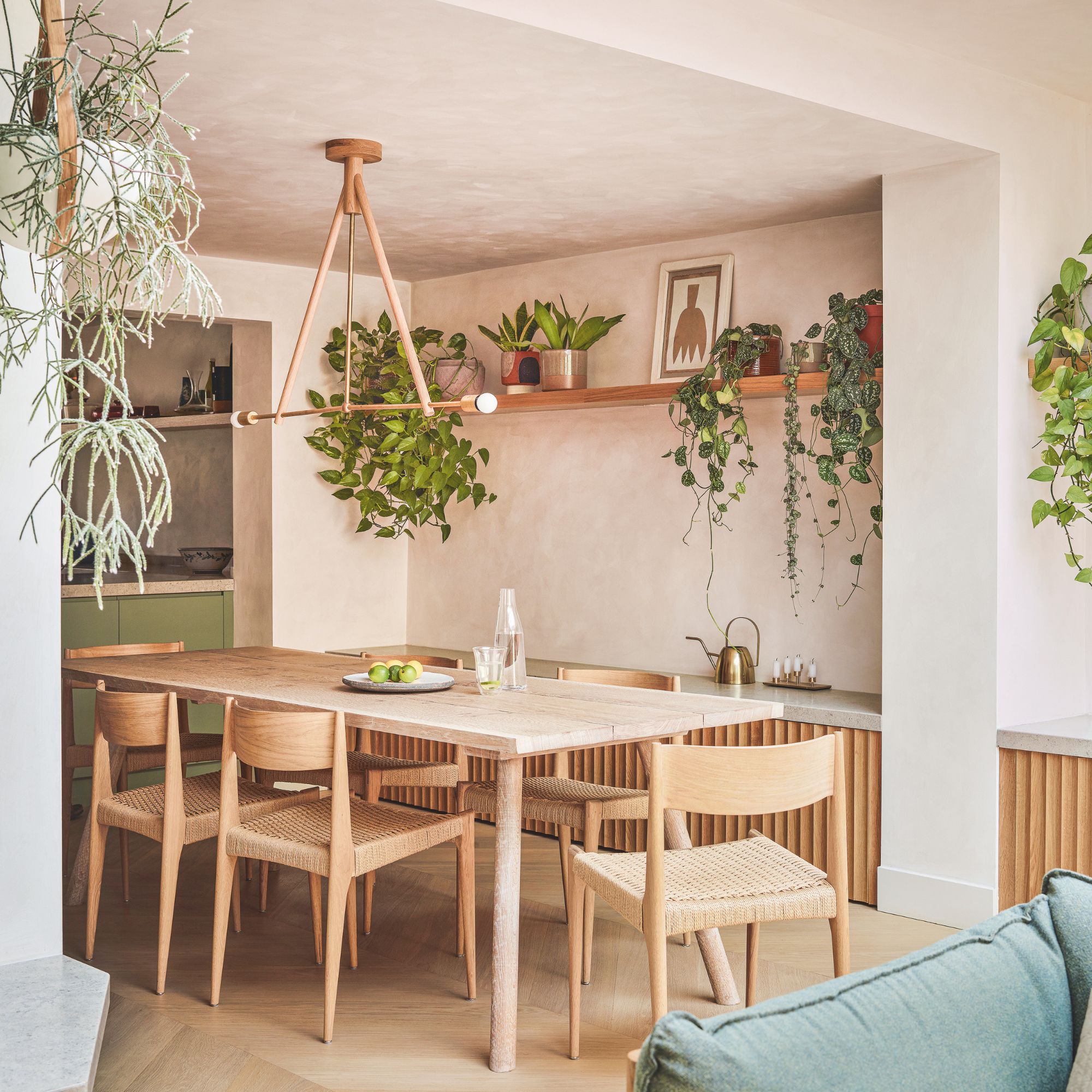 Experts warn these flooring choices will make it harder to sell your home — why it may pay off (quite literally) to replace them before you move
Experts warn these flooring choices will make it harder to sell your home — why it may pay off (quite literally) to replace them before you moveCertain flooring choices can increase the value of your home by up to 5%
By Lauren Bradbury
-
 I tried Gozney's new Tread pizza oven – it's ultra-thin pizza stone means it heats up seriously fast
I tried Gozney's new Tread pizza oven – it's ultra-thin pizza stone means it heats up seriously fastThe much-awaited portable oven from the brand has arrived. But is it any good? I tested it to find out
By Molly Cleary
-
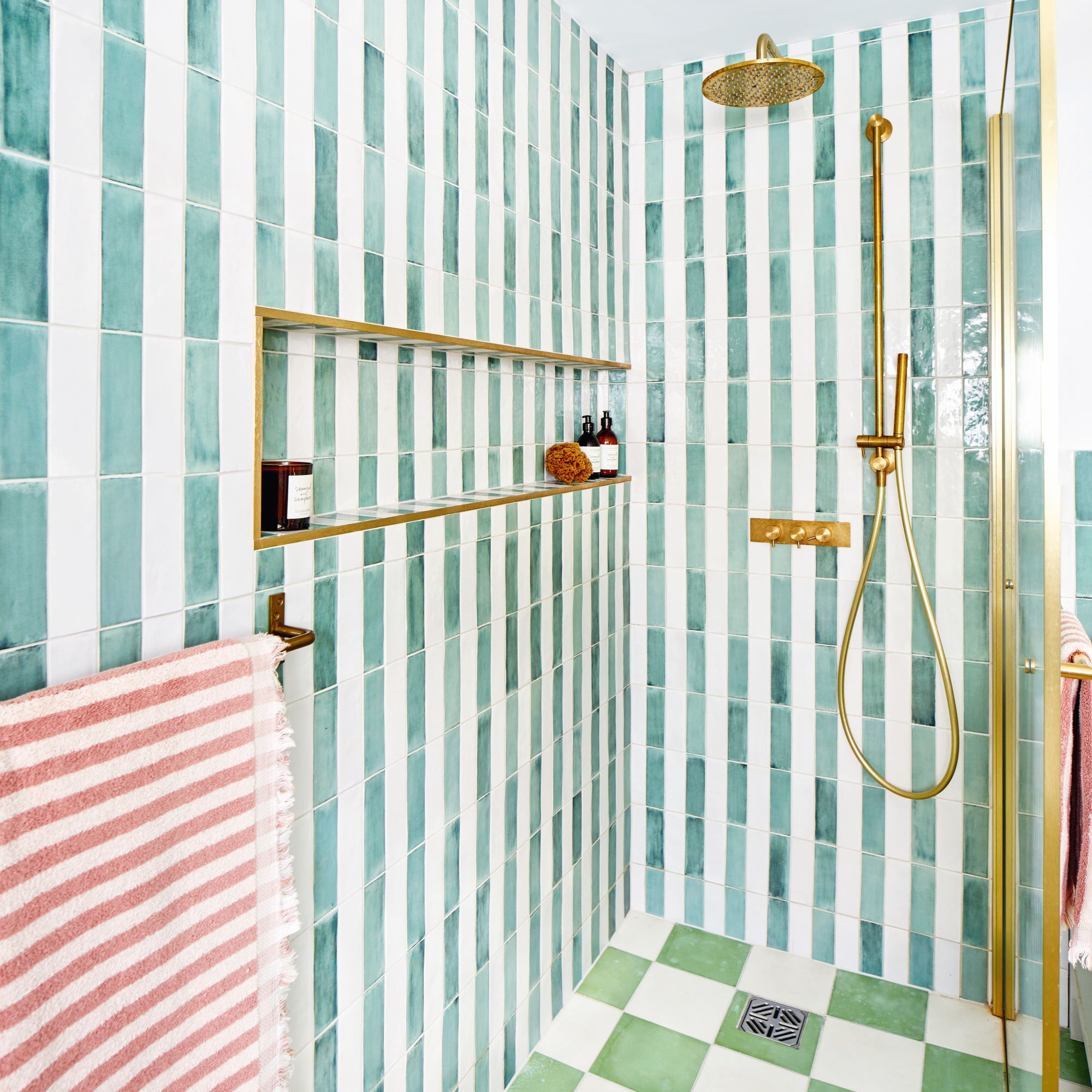 Is a shower ledge better than a shower niche? I asked bathroom experts why this storage option reigns supreme
Is a shower ledge better than a shower niche? I asked bathroom experts why this storage option reigns supremeIt's the best way to store your shampoo and conditioner stylishly
By Holly Cockburn